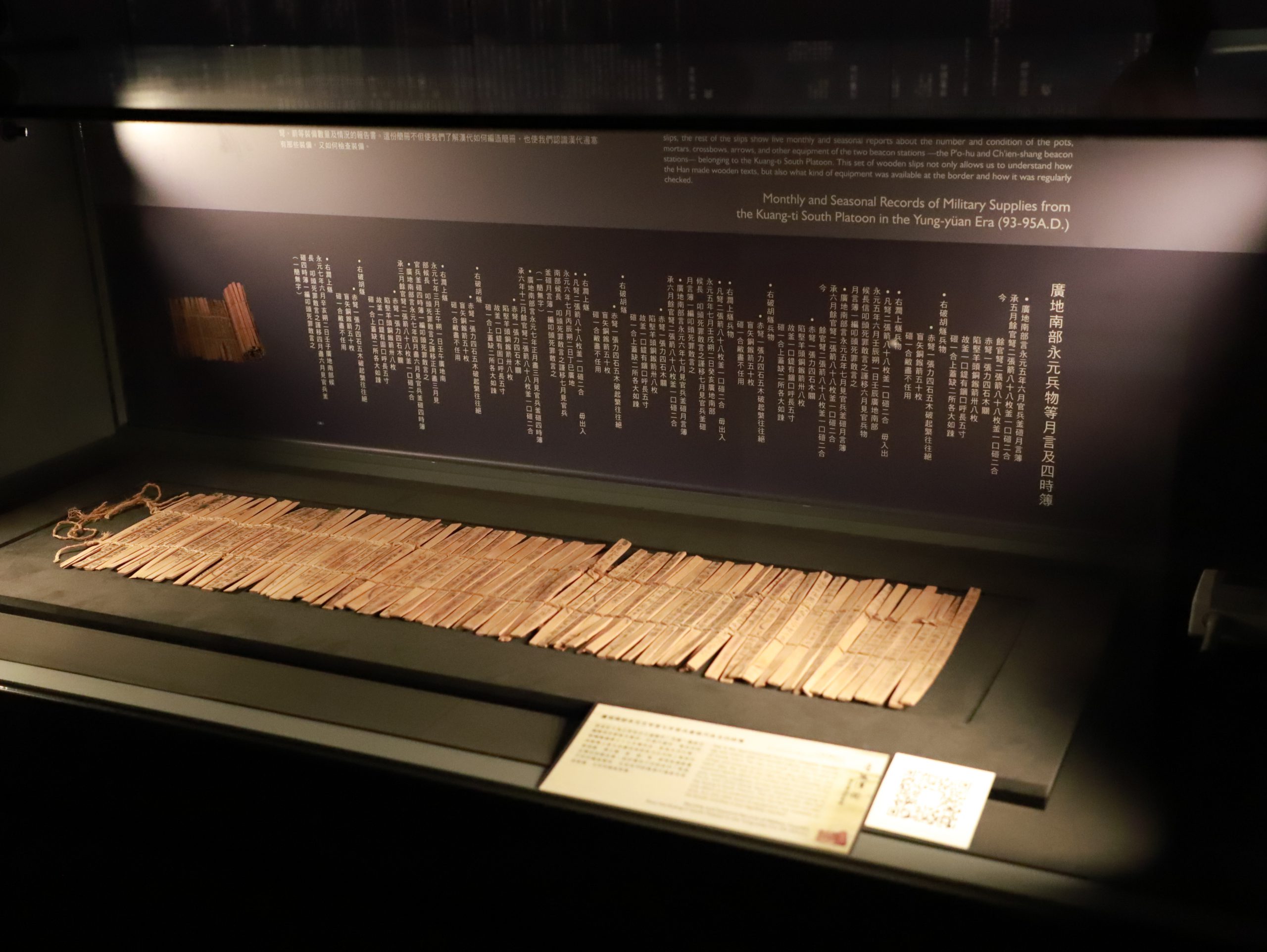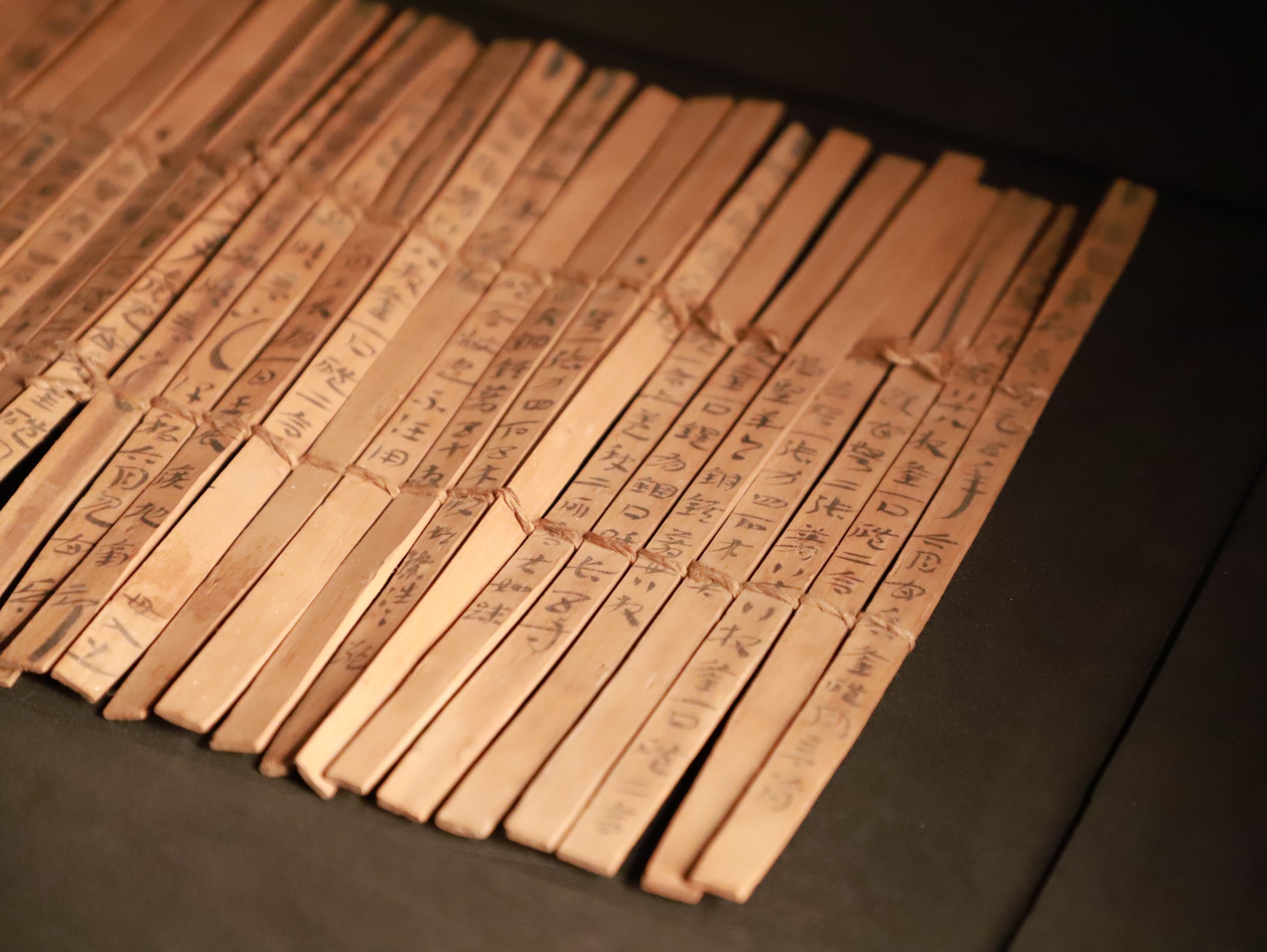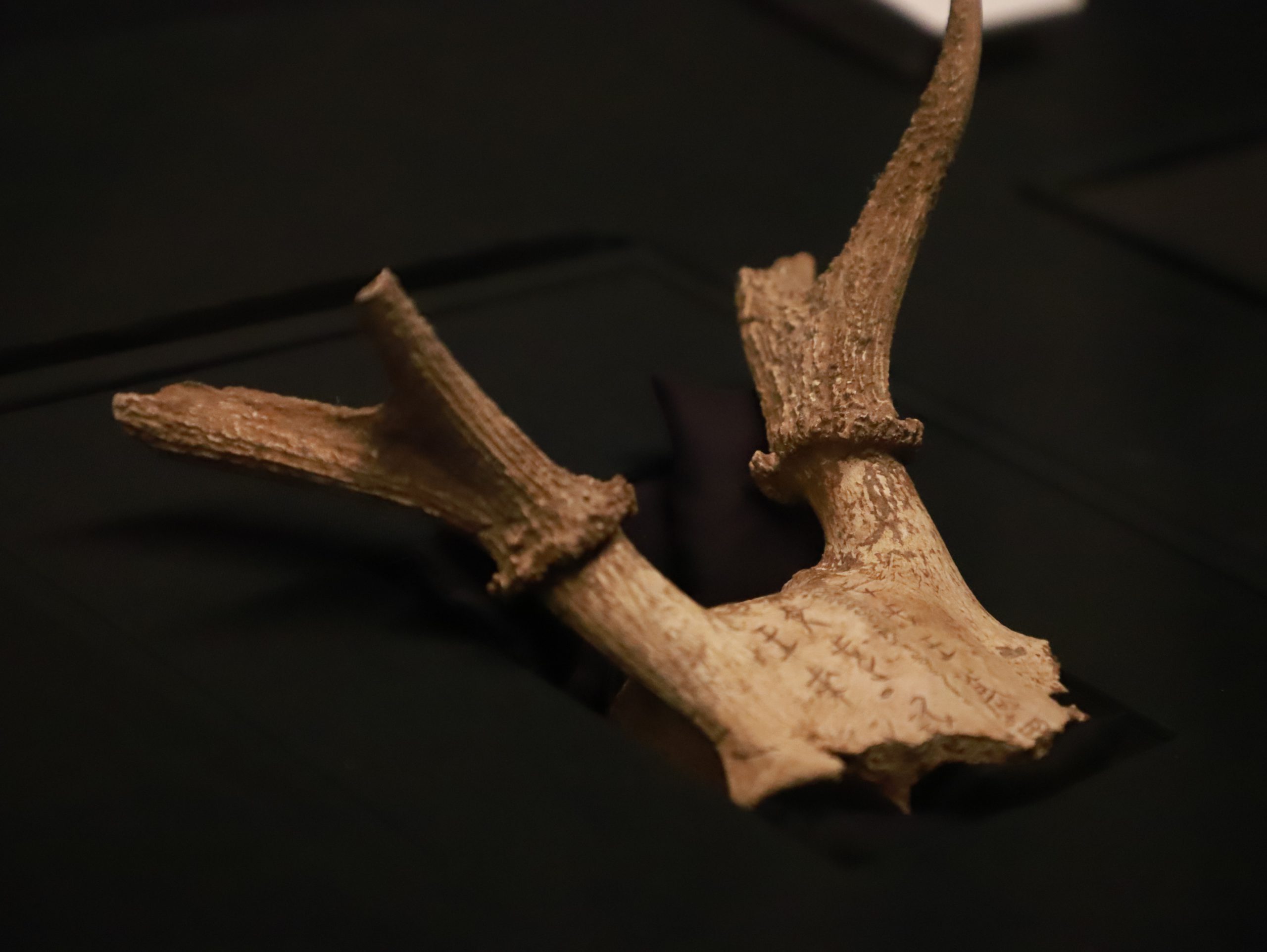Standing tall and majestic along Humanities Road is the Museum of the Institute of History and Philology (IHP), which boasts the largest collection and most national treasures at Academia Sinica. The predecessor of the IHP Museum was a one-room exhibition hall for archaeological artifacts founded in 1958. Designed by acclaimed Taiwanese architect Da-Hong Wang, the IHP Museum was established in 1986 as the collection grew bigger. It now hosts more than 100,000 pieces of artifacts. Follow our AS Anniversary Special Edition on an excavation hunt at the “Little Palace Museum” to appreciate the rich depths of history.
The First National Treasure: Han Dynasty Wooden Slips from Edsen-gol
Our visit should start on the second floor, the “Historical Space”. The first exhibition is Han Dynasty Wooden Slips from Edsen-gol, one of the four most notable academic discoveries in early twentieth-century China. The 23.8 centimeters long “Monthly and Seasonal Records of Military Supplies from Kuang-ti South Platoon in the Yong-yuan Era” is the best-preserved and most complete set of wooden slips, with wood pieces, strings, and ink mostly intact. It is also the first national treasure to be registered.


Closing Ranks! The Armories of the Yin Ruins
Let’s continue our visit at the “Archeological Space” on the first floor, designed to resemble an actual excavation site. It features exhibitions from four time periods separated by glass walls: Longshan Culture, Yin Ruins, Western Chou, and Eastern Chou. Among the Yin Ruins exhibition are hundreds of bronze spearheads, comprising the most important find of the Hsi-pei-kang royal cemetery excavation.

Finding the Academia Sinica Emblem: The Oracle Bone Inscriptions
Oracle bones have caught researchers’ attention since first being discovered in 1899. However, large-scale scientific excavations were not conducted until 1928 following the establishment of the Institute of History and Philology. Excavations at Hsiao-t’un Village in Henan Province uncovered more than 25,000 pieces, with the IHP Museum housing the world’s most comprehensive Yin Ruins oracle bone collection.
Among this collection, the Inscribed Deer Skull, Chia-pien 3940 and 3941, are the only two remaining pieces of inscribed deer skulls in the world. Delicately shaped and highly intact, Chia-pien 3940 is a national treasure, and the inscription on Chia-pien 3941 inspired the Academia Sinica emblem.

Inscribed Deer Skull, Chia-pien 3940

Inscribed Deer Skull, Chia-pien 3941
Aside from collecting historical artifacts, IHP Museum is the embodiment of research achievements at the Institute of History and Philology since the 1920s. As first-hand material is crucial for studying history, excavated artifacts collected for research purposes bestow the IHP Museum with immense value. In addition, we hope the IHP Museum may continue to enhance it contributions to scholarship and fulfill its greater mission by opening to the general public and allowing visitors to reflect upon humanity’s past.
Museum of the Institute of History and Philology Information
- Location: The History Exhibition Building beside the Institute of History and Philology
- Collection Size: Over 140,000 total items, plus 100,000+ Han Dynasty Wooden Slips from Edsen-gol, 2,000+ Chinese Minority Ethnic Group artifacts, and 310,000+ items from the Archives of the Ming-Ch’ing Grand Secretariat.
- National Treasure Collection: 22 sets.
- Permanent Exhibitions: “Archeological Space” on the first floor, with tomb excavations from the Shang and Chou dynasties and Warring States era; “Historical Space” on the second floor, divided into seven areas: Han Dynasty Wooden Slips from Edsen-gol, Rare Texts, Archive of the Grand Secretariat, Artifacts from Ethnic Groups of Southwestern China, Rubbings, Taiwanese Archaeology, and Special Exhibitions
- Hours: Every Wednesday, Saturday, and Sunday from 9:30 to 16:30. (The Museum will resume regular hours on June 17. Guided tours are temporarily closed due to the pandemic.)
- Current Special Exhibitions: “A Window to Eastern Chou: Eastern Chou Relics Excavated from Honan”
- Website: http://museum.sinica.edu.tw/
- Facebook: https://www.facebook.com/ihpmuseum/
